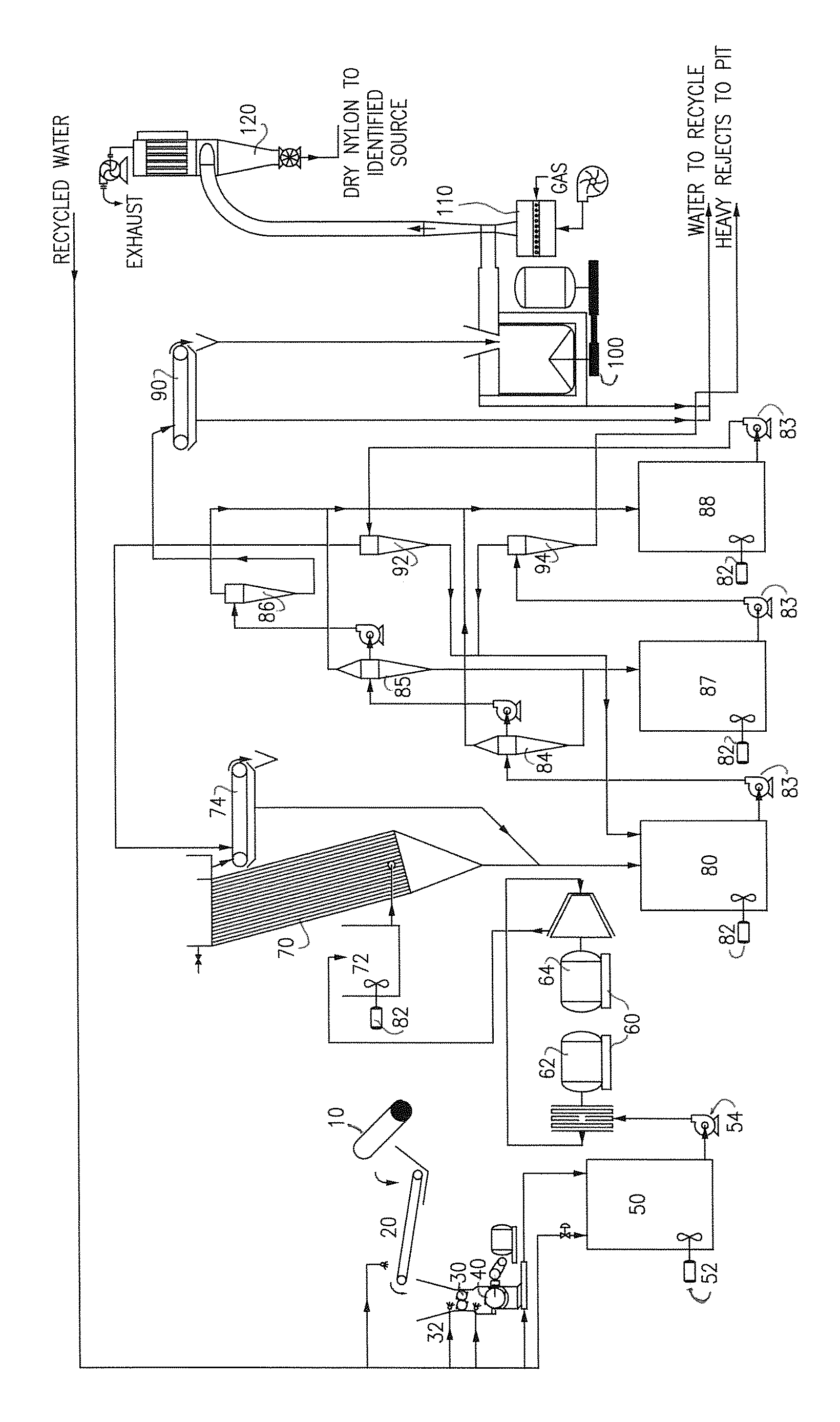Process for recovering nylon and polypropylene from a nylon fiber source
a technology of nylon fiber and polypropylene, which is applied in the field of nylon fiber recovery process, can solve the problems of incompatible or immiscible polypropylene, inferior physical properties of nylon, and much lower melt temperature, so as to reduce the length of nylon and polypropylene fibers, reduce the amount of nylon fiber recovery, and avoid centrifugation
- Summary
- Abstract
- Description
- Claims
- Application Information
AI Technical Summary
Benefits of technology
Problems solved by technology
Method used
Image
Examples
Embodiment Construction
[0012]In this specification, all numbers disclosed herein designate a set value, individually, in one embodiment, regardless of whether the word “about” or “approximate” or the like is used in connection therewith. In addition, when the term such as “about” or “approximate” is used in conjunction with a value, the numerical range may also vary, for example by 1%, 2%, 5%, or more in various other independent embodiments.
[0013]A nylon fiber source is obtained from a supply such as furniture coverings, drapes, blinds, and the like, and preferably from nylon-containing whole carpets including, in one embodiment, broadloom and tufted. While various nylon fiber sources can be utilized, the present invention will be discussed with respect to carpet, with the understanding that other nylon fiber sources such as those noted herein above, can also be utilized in the systems and processes of the present invention.
[0014]The nylon-containing carpets of the present invention are tested with respe...
PUM
| Property | Measurement | Unit |
|---|---|---|
| length | aaaaa | aaaaa |
| length | aaaaa | aaaaa |
| specific gravity | aaaaa | aaaaa |
Abstract
Description
Claims
Application Information
 Login to View More
Login to View More - R&D
- Intellectual Property
- Life Sciences
- Materials
- Tech Scout
- Unparalleled Data Quality
- Higher Quality Content
- 60% Fewer Hallucinations
Browse by: Latest US Patents, China's latest patents, Technical Efficacy Thesaurus, Application Domain, Technology Topic, Popular Technical Reports.
© 2025 PatSnap. All rights reserved.Legal|Privacy policy|Modern Slavery Act Transparency Statement|Sitemap|About US| Contact US: help@patsnap.com

